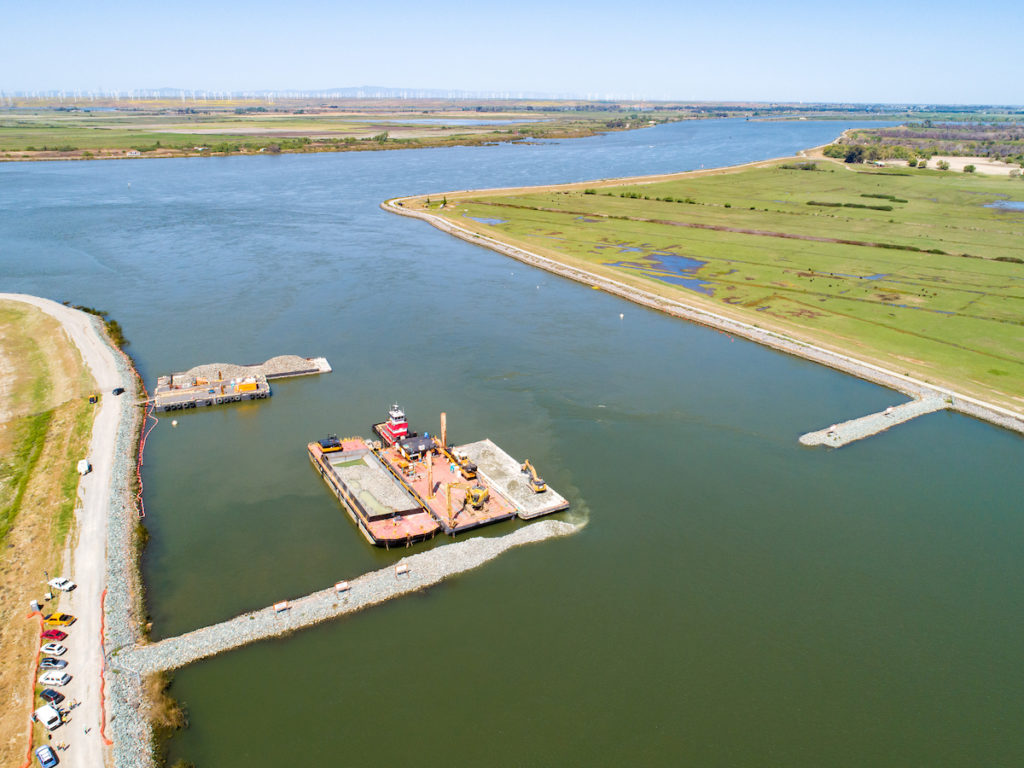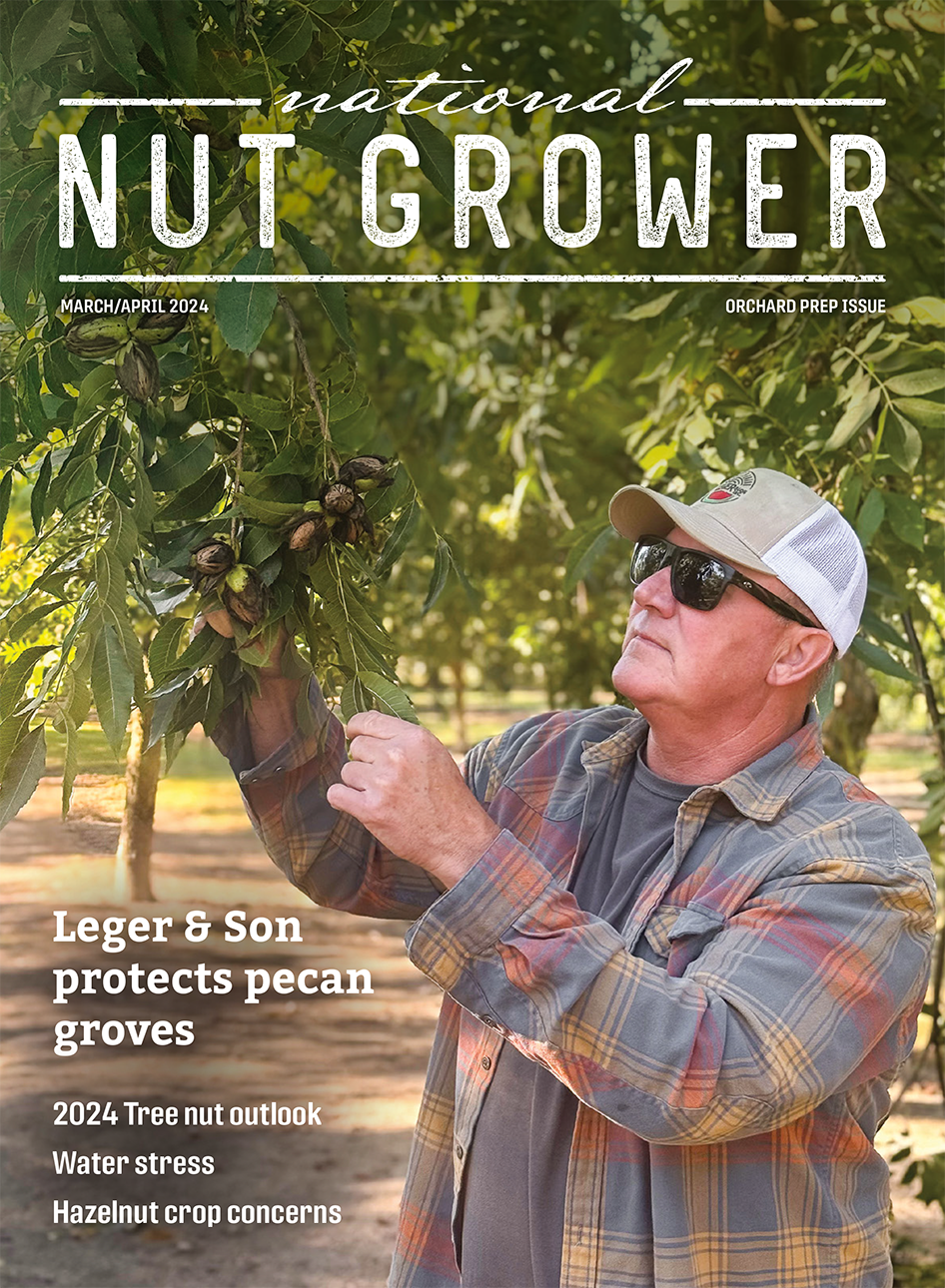
Apr 14, 2022Water cuts leave hard choices for farmers
Hit with a third consecutive year of drought, farmers on the west side of the San Joaquin Valley who grow trees, vines and row crops are making difficult decisions on what to farm and what to fallow.
“We’re just in a tough situation right now. We’ve been dealt a really tough hand of cards,” said Fresno County farmer Ryan Ferguson, who farms trees and row crops in Lemoore. “We have enough water to get our trees through, but there’s going to be fewer acres planted on the ranch. We’re fallowing about 1,200 acres of row-crop ground.”
Ferguson serves as board president of Westlands Water District, the state’s largest agricultural water district. He is a contractor of the federal Central Valley Project (CVP). This is the second year that the district received a zero water allocation due to drought. In 2020, the allocation was 20%.
“Water’s the primary concern, and for us and for a lot of growers who are row-crop farmers and have permanent plantings, it’s (about) protecting that long-term investment, which potentially could be a multi-generational investment,” he said. “We can survive on zero, short term.”
Most west side farmers, Ferguson said, rely on a portfolio of different water sources. But insufficient supplies have them looking at which trees to topple or crops to idle to conserve water.
“We’ll fallow a lot of row-crop ground, we’ll pump some well water, we’ll purchase water through the district’s supplemental pool and probably purchase a little bit of water on the open market,” Ferguson said. “Supplemental water brought in by the district is really expensive water. You can’t afford to farm a whole crop on it, but it’s part of your water portfolio.”
Neighboring farmer Ted Sheely grows a mix of tree, row and field crops in Lemoore. Sheely said he began preparing for spring planting last fall, adding, “Our thing has been let’s plan for the worst and hope for the best.”
Sheely said he is pondering these questions: “What contracts can we sign? And, how much water do we have that we’re going to carry over?”
“Between all the entities,” he said, “there’s about 1,300 acres being fallowed. We want to make sure that we have enough water to supply our needs during the year.”
Sheely’s water portfolio includes supplemental water from last season that he purchased for $1,100 per acre-foot in his Westlands account.
“You’re not going to grow any crop (with supplemental water), but when you just need a little bit – a proportional amount like a tenth of an acre-foot – you put that in there,” Sheely said. “We keep some because, when bad things happen, it’s good to have a little bit more in reserve. We’ll buy supplemental water this year.”
Both farmers said they are also concerned about economic impacts to employees and local communities.
“It’s just unfortunate. The socioeconomic impacts of fallowed ground trickles down to all throughout the community,” Ferguson said. “For us, it’s fewer acres planted, less work for employees and less business that we’re doing with our ag retailers and less commerce that’s being conducted in town.”
Agricultural production within Westlands Water District generates more than $4.7 billion in annual economic activity and supports more than 35,000 jobs, according to a study released in March by Michael A. Shires, a professor at the Pepperdine University School of Public Policy.
The study found a correlation between local poverty levels in Fresno and Kings counties and available surface water.
Ernest Conant, U.S. Bureau of Reclamation regional director of the California Great Basin region, said the region is facing water challenges unseen in more than 160 years.
“We now find ourselves in the lowest January, February and March of records going back to 1858, and we wouldn’t expect to get very much more precipitation beyond this point,” Conant said last week during a meeting of the California State Board of Food and Agriculture held at the University of California, Merced. “This year, the settlement contractors are not going to allow any transfers south of the delta, so that is another impact.”
Conant added: “There’s just going to be very little transfer water available because things are so difficult in the north. There’s going to be hundreds of thousands of acres in the Sacramento Valley that have never been fallowed before that are going to be fallowed this year.”
In discussing the low levels of most of the state’s reservoirs, Conant said storms added very little to Lake Shasta, the state’s largest CVP reservoir at 4.5 million acre-feet. Lake Shasta is at 38% capacity, which is 48% of the historical average. San Luis Reservoir, a critical south-of-delta holding facility for the CVP and the State Water Project (SWP), remains at 46% of average or 53% of the historical average.
Conant said the federal water provider’s primary goals are now public health and safety and trying to build storage.
Meanwhile, he said 2 million to 3 million acre-feet a year is needed to repel salinity in the critical Sacramento-San Joaquin Delta. But this year a petition was granted to reduce standards in the delta to preserve water storage in key reservoirs.
Conant said the Bureau of Reclamation is working with the state on reconsultation of long-term, biological opinions that guide CVP and SWP operations.
The federal agency joined the state and major water districts as signatories to voluntary agreements that promise to increase flows for salmon and native fish, and financially compensate Northern California rice farmers who fallow land to save water.
The agreements are being advanced as an alternative to the regulatory regime of the Bay-Delta water quality control plan by the State Water Resources Control Board.
Seeking to increase the supply of water, the bureau completed feasibility studies for projects that may receive federal funding, including building Sites Reservoir and Del Puerto Canyon and expansion of Los Vaqueros and San Luis Reservoir.
Reacting to efforts to increase the water supply, Ferguson said, “I think there’s a future of farming in Westlands. It’s probably going to look different than what it has been historically, but I think we’re going to have to get innovative.”
Sheely added, “Agriculture is a key industry. You really want it in your country.”
But he said he is worried that restrictions on California farms could result in forfeiting agricultural production to other nations.
“When you farm agriculture out to other countries,” he said, “you’re really putting yourself at risk.”
– Christine Souza, California Farm Bureau Federation
Refilling a notch in a temporary emergency drought barrier. The 750-foot-wide rock barrier will help deter the tidal push of saltwater from San Francisco Bay into the central Delta. Photo taken April 6, 2022. Photo: Florence Low, California Department of Water Resources







